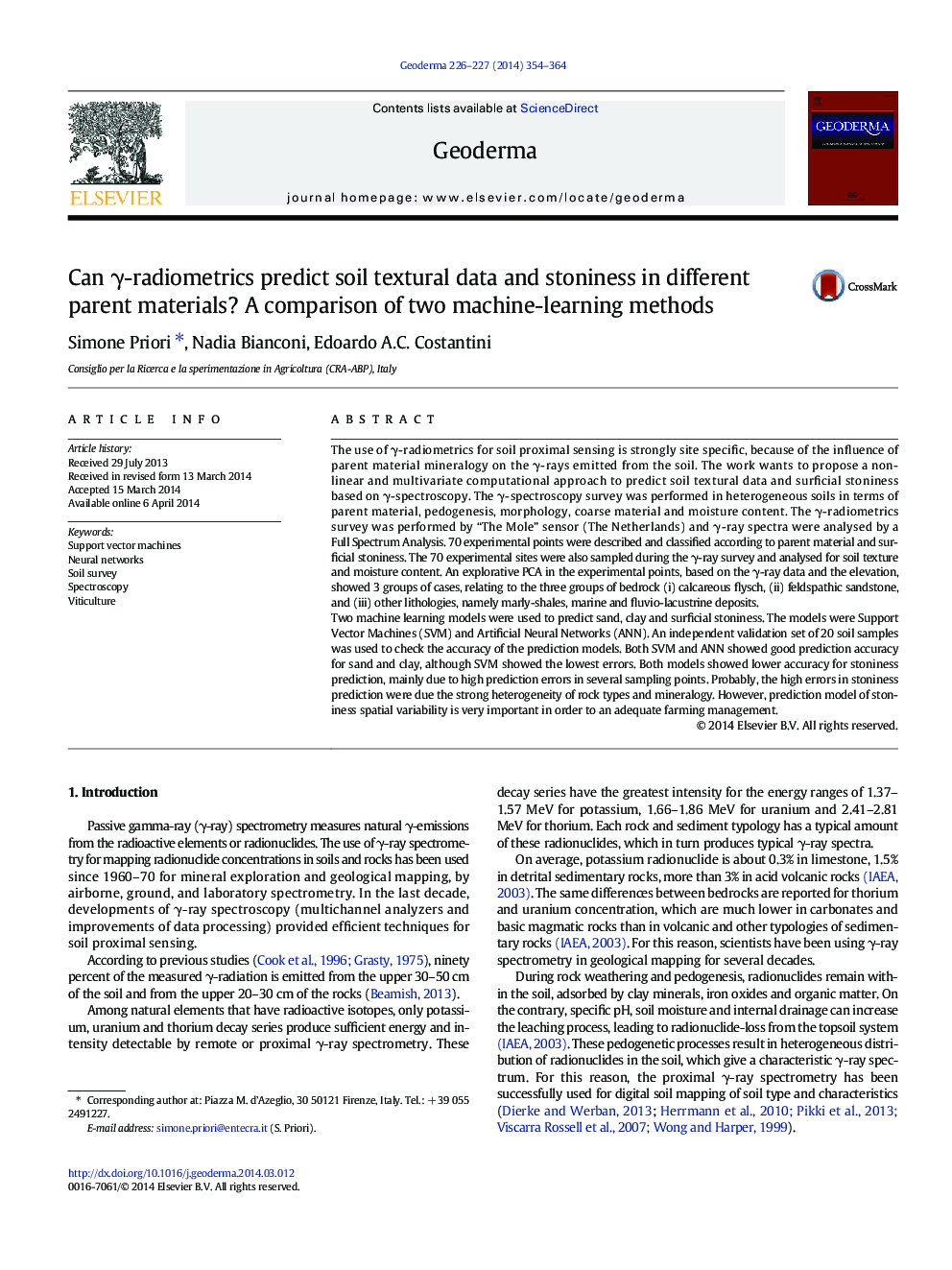| کد مقاله | کد نشریه | سال انتشار | مقاله انگلیسی | نسخه تمام متن |
|---|---|---|---|---|
| 6408896 | 1629472 | 2014 | 11 صفحه PDF | دانلود رایگان |

- 7 vineyards, for a total area of 30 ha were surveyed by γ-ray spectroscopy.
- The vineyards were characterized by different parent material and soils.
- Clay, sand and surficial stoniness maps were predicted using the γ-ray data.
- We used a multivariate approach to consider the influence of parent material.
- We tested two machine learning methods (SVM and ANN) to predict the maps.
The use of γ-radiometrics for soil proximal sensing is strongly site specific, because of the influence of parent material mineralogy on the γ-rays emitted from the soil. The work wants to propose a non-linear and multivariate computational approach to predict soil textural data and surficial stoniness based on γ-spectroscopy. The γ-spectroscopy survey was performed in heterogeneous soils in terms of parent material, pedogenesis, morphology, coarse material and moisture content. The γ-radiometrics survey was performed by “The Mole” sensor (The Netherlands) and γ-ray spectra were analysed by a Full Spectrum Analysis. 70 experimental points were described and classified according to parent material and surficial stoniness. The 70 experimental sites were also sampled during the γ-ray survey and analysed for soil texture and moisture content. An explorative PCA in the experimental points, based on the γ-ray data and the elevation, showed 3 groups of cases, relating to the three groups of bedrock (i) calcareous flysch, (ii) feldspathic sandstone, and (iii) other lithologies, namely marly-shales, marine and fluvio-lacustrine deposits.Two machine learning models were used to predict sand, clay and surficial stoniness. The models were Support Vector Machines (SVM) and Artificial Neural Networks (ANN). An independent validation set of 20 soil samples was used to check the accuracy of the prediction models. Both SVM and ANN showed good prediction accuracy for sand and clay, although SVM showed the lowest errors. Both models showed lower accuracy for stoniness prediction, mainly due to high prediction errors in several sampling points. Probably, the high errors in stoniness prediction were due the strong heterogeneity of rock types and mineralogy. However, prediction model of stoniness spatial variability is very important in order to an adequate farming management.
Journal: Geoderma - Volumes 226â227, August 2014, Pages 354-364